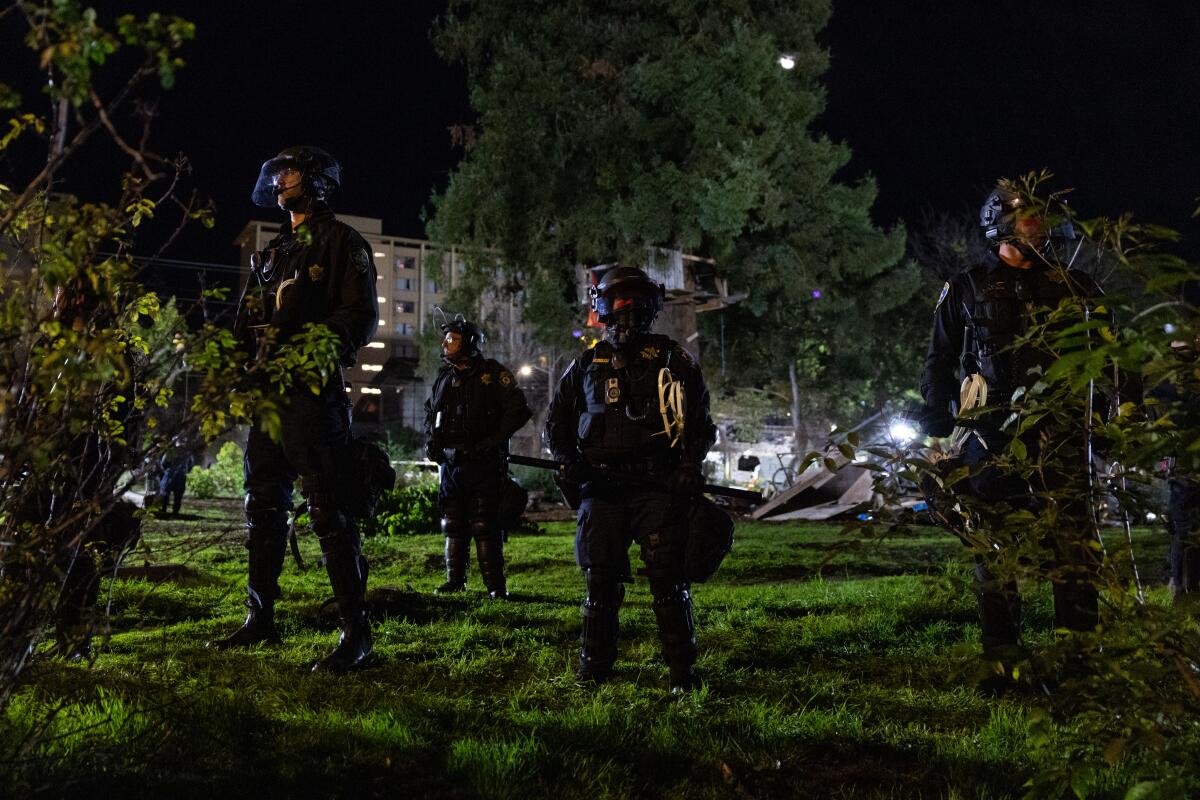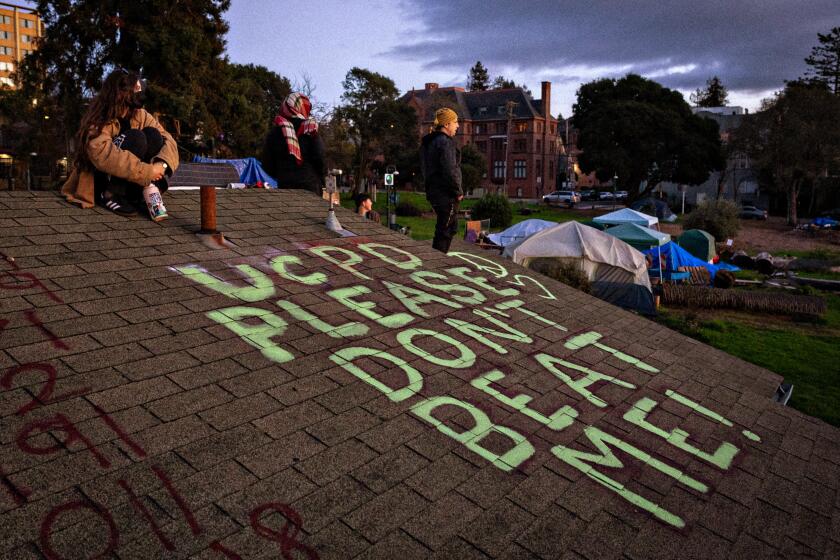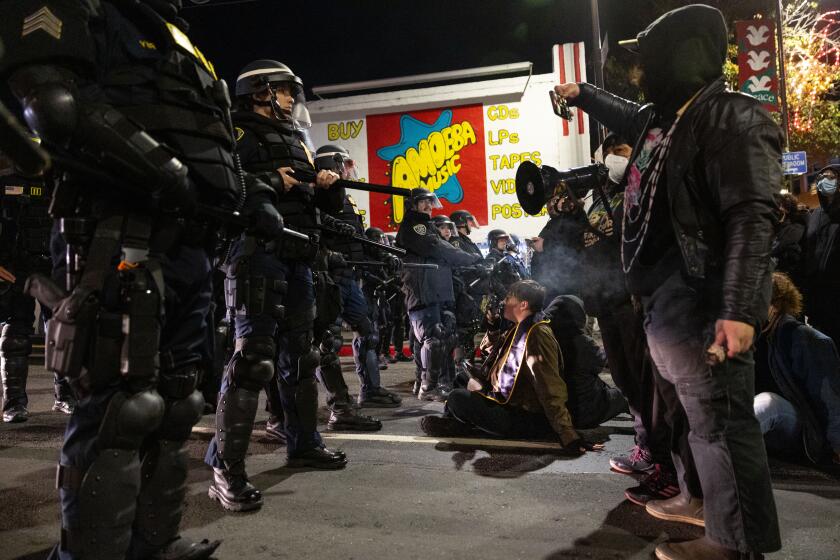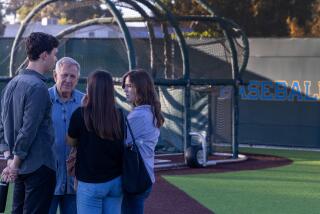UC Berkeley closed People’s Park. The cost is in the millions and rising

- Share via
UC Berkeley spent $7.8 million to deploy its own forces to wall off and secure People’s Park, the storied 2.8-acre green space that activists seized in the ’60s to serve as a gathering space for nonconformists.
That multimillion-dollar total is expected to grow substantially as outside police agencies submit their bills to the university.
And the cost of keeping people out of the park continues to be high: The university pays nearly $1 million a month to station private security guards outside the park, 24 hours a day.
The massive dead-of-night operation to clear the park and surround it with a double-high stack of 160 steel cargo containers was executed in early January, in anticipation of the Berkeley campus being cleared to build a new housing complex.
Half a century after its tumultuous birth, People’s Park in Berkeley, a treasured home for misfits and seekers, may have seen its last day
Litigation continues to block the construction of 1,100 units of student housing, 125 units of supportive housing for homeless people and a memorial to the park south of the Berkeley campus.
University officials hope that the state Supreme Court will hear a case about the future of the park this spring, potentially ruling by summer whether to allow construction on the property, first seized and turned into open space by activists in 1969.
In response to a public records request, Berkeley campus officials revealed Wednesday that they spent $2.85 million to build the 17-foot-high perimeter around the park, which includes the shipping containers (at a cost of $972,000), for gates, lighting, other equipment and supervision ($1.27 million) and for engineering and surveying ($515,000).
An additional $3.77 million went to pay, house and feed the police officers and sheriff’s deputies who cleared and surrounded the park in early January. Nearly $1.5 million of that money went to pay overtime to officers from the University of California Police Department.
Photos: Police converge on People’s Park in Berkeley to clear the way for crews to prepare the storied green space for construction of student housing.
The $7.8-million tally also includes $1.16 million that UC spent to move homeless people from the park to a Quality Inn, where they receive meals and other services.
Still remaining to be submitted and/or totaled are bills from the California Highway Patrol, sheriff’s departments for Alameda and San Francisco counties and from nine other UC and Cal State University police departments. A UC spokesman said “it could take several more months” for those IOUs to arrive. It’s expected that they will add millions of dollars to the cost of the park clearance.
In a letter accompanying the figures, UC Berkeley spokesman Kyle Gibson explained in a statement that the extraordinary operation, cloaked in secrecy, was designed to avoid the sort of conflict that had prevented the university from developing People’s Park for more than half a century.
“Our highest priorities for the closure were safety, avoidance/deterrence of conflict, and the minimization of disruption for students and neighboring residents,” the statement said.
The letter described the “vandalism, violence and other unlawful activities” that occurred when the university tried, and failed, to take control of the park in August 2022. That prior experience “necessitated extraordinary measures, precautions and expenditures” when UC moved in January to secure the park, Gibson’s letter said.
Activists who fought for years to keep the park said they were outraged but not surprised at the high cost of the university’s takeover.
“The recklessness with which UC spends the public’s money is well known to this community,” said Andrea Prichett, a member of the People’s Park Council and Berkeley Copwatch. “Think of other things that could have been done with that money. It’s a tragic waste.”
Park activists have complained, in particular, that the university disrupted a community of homeless people who were supporting one another on the property, which lies just steps to the east of Telegraph Avenue.
But university officials insist that the unhoused residents are better off in the Quality Inn, with food and services provided by community groups and removed from the crime that at times went unchecked in the park.
Although opponents call the steel barricade a “monstrosity,” university officials said it had helped keep the park clear — and ready for construction — for the first time since community members planted flowers and trees there, in 1969.
More to Read
Sign up for Essential California
The most important California stories and recommendations in your inbox every morning.
You may occasionally receive promotional content from the Los Angeles Times.













